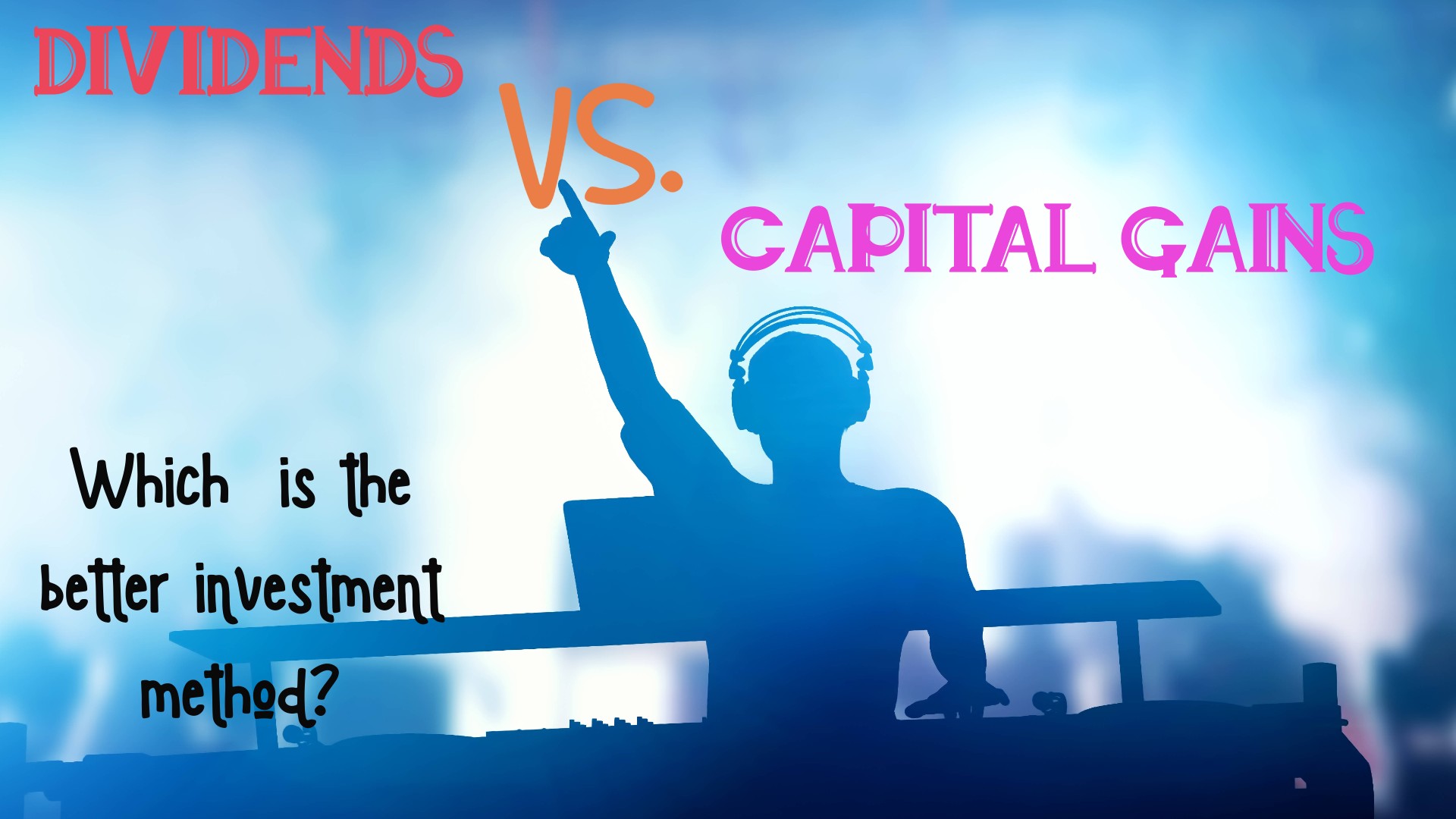Dividends vs. Capital Gains is the battle of the ages. But which one is more effective in building generational wealth? Which one will make you rich? The answer, like most answers, is in the eye of the beholder. Let’s start by giving a quick definition of each.
Dividends are a portion of the profits of a company. You receive dividends when you own dividend-paying stocks on the stock market. An example of a dividend-paying stock is McDonald’s.
Capital gains occur when the price of your asset goes up in value and then you sell the asset. Capital gains are the profit that you have made. Usually, growth stocks are held purely for capital gains because they do not pay dividends. Tesla is an example of a growth stock.
How do you decide which method is best for you? Well, before we dive into which is best for you, let’s look at similar situations that are not in the stock market. Some assets will produce income and others will go up in price. Once you see the scenarios played out in different situations, it may give you a little more insight into your personality.
Rental income vs house appreciation. Would you buy a home to provide rental income? Or would you buy a home below market value, flip it, sell it, and try to make a profit?
Residual business income vs selling your business. If you owned an amazing business, would you turn it over to a manager and keep the income coming in, or would you sell it to the highest bidder?
Bonds vs Sports (or Pokemon) Cards. Bonds will pay you income over the course of their lifetime. Owning sports cards or Pokemon cards can be very lucrative, but only if you sell them.
The pros and the cons of both income investing (dividends) and capital appreciation (capital gains) investing.
Income investing. The pros of income investing are that you would be earning income while you built a huge portfolio of assets. Eventually, if done correctly, you will be able to retire because the income from your investments would supersede the amount of expenses that you require. This is called being financially independent. Also, dividend-paying stocks have an opportunity to also appreciate (raise) in value. Some of the cons of income investing are that you would need to study which stocks are good dividend-paying stocks. You would also need to follow the stock market news from time to time. Also, dividend investing is very slow. It takes a lot of money to reach financial independence. For instance, investing $1000 into a 5% dividend yield stock will pay you $50 a year.
Capital Appreciation investing. The pros of investing for capital gains are the speed. If you can find the right stocks and get in early enough, you can grow your wealth extremely fast. If you would have gotten into Telsa in 2012, you could probably be close to retirement by now. Some of the cons are that you will be constantly on edge, worried if now is the time to sell. I have a few growth stocks that have doubled in value. You start to worry if this is the time to sell. It is a constant pressure that some people can’t handle. I just tell myself to buy and hold. A good phrase is this “Your investment account is like a bar of soap in the shower, the more that you handle it, the smaller it gets.” Live by these words.
So what is my advice to you? It comes down to the difference between these two ideas. Static Wealth (capital gains) is basically having a big pile of money and functional wealth (dividends) is wealth that pays you income. If you are looking to build an income-paying portfolio, go with dividend investing. If you are looking to achieve a certain large amount of money in investments go with capital appreciation. This debate is also known as value (dividends) vs growth (capital appreciation).
My choice. I am a dividend investor. I love receiving dividends. They are like little paydays throughout the month. I am obsessed with them. I do not like worrying about if I should sell every morning that I wake up. I personally feel that capital gains investing is a permanent roller coaster ride. As a dividend investor, you will constantly hear how amazing someone else’s growth portfolio is doing. They will be building wealth faster than you. You will have money in McDonald’s and Wal-Mart and they will have money in Tesla and Shopify. As a dividend investor, your eye is on retirement and building generational wealth for the long term. I would recommend having small amounts invested in growth stocks (maybe 10% or less of your portfolio), but your main goal is to produce income for life. I love looking at my nice, boring McDonald’s stock. I also love looking at their dividend payout. That is my style. Which investment method will you choose?
Get Your Free eBook:
Follow us on our Facebook Page:
https://www.facebook.com/kingmarine1775
Join our Facebook group at:
https://www.facebook.com/groups/231490384820780
Follow us on Pinterest at:
Disclosure: I am not a financial advisor or money manager, and any knowledge is given as guidance and not direct actionable investment advice. I am an Amazon Affiliate. Please research any investment vehicles that are being considered. I wrote this article myself, and it expresses my own opinions. I am not receiving compensation for it. I have no business relationship with any company whose stock is mentioned in this article.

Leave a Reply